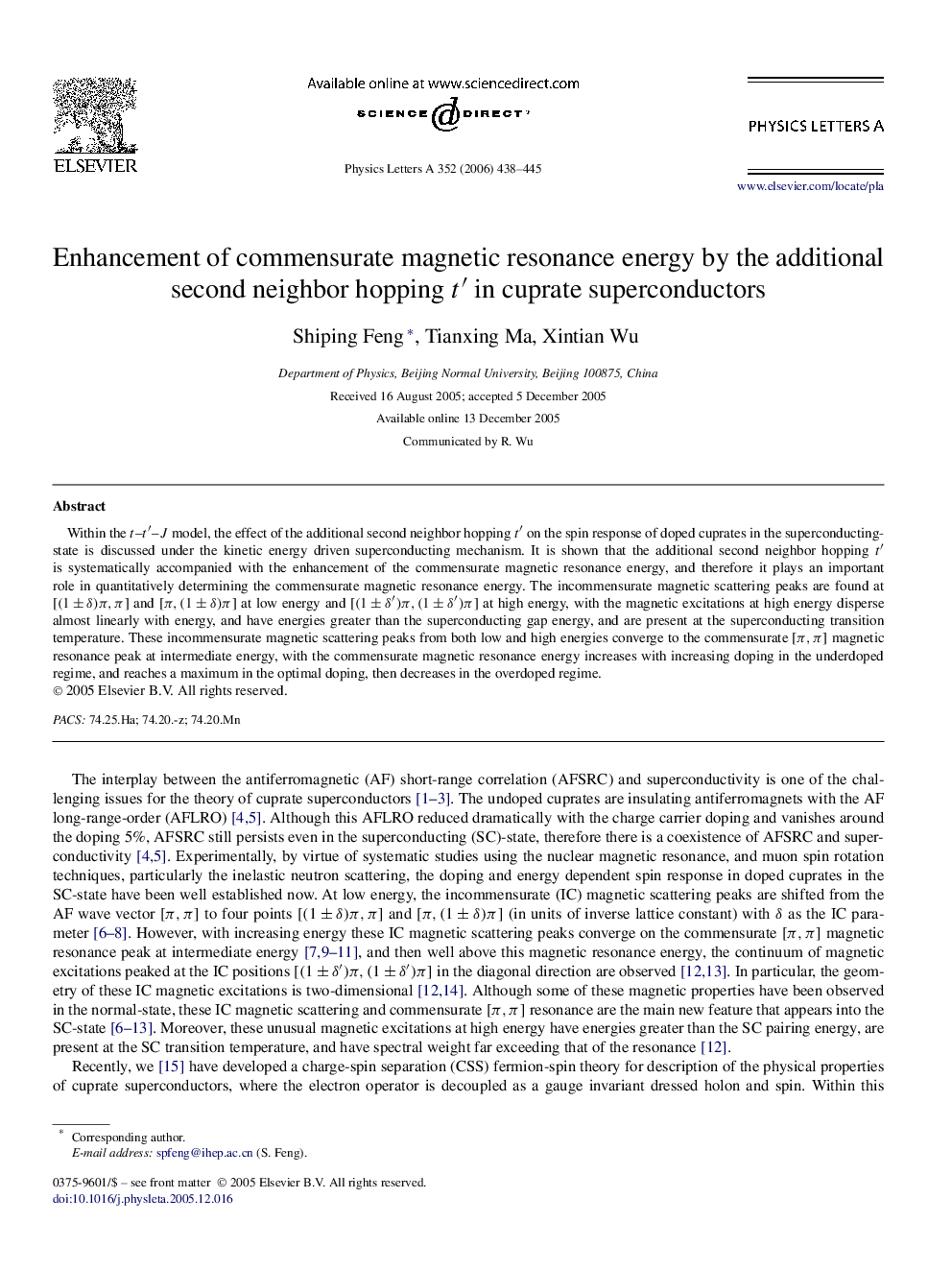| Article ID | Journal | Published Year | Pages | File Type |
|---|---|---|---|---|
| 1868428 | Physics Letters A | 2006 | 8 Pages |
Abstract
Within the t-tâ²-J model, the effect of the additional second neighbor hopping tâ² on the spin response of doped cuprates in the superconducting-state is discussed under the kinetic energy driven superconducting mechanism. It is shown that the additional second neighbor hopping tâ² is systematically accompanied with the enhancement of the commensurate magnetic resonance energy, and therefore it plays an important role in quantitatively determining the commensurate magnetic resonance energy. The incommensurate magnetic scattering peaks are found at [(1±δ)Ï,Ï] and [Ï,(1±δ)Ï] at low energy and [(1±δâ²)Ï,(1±δâ²)Ï] at high energy, with the magnetic excitations at high energy disperse almost linearly with energy, and have energies greater than the superconducting gap energy, and are present at the superconducting transition temperature. These incommensurate magnetic scattering peaks from both low and high energies converge to the commensurate [Ï,Ï] magnetic resonance peak at intermediate energy, with the commensurate magnetic resonance energy increases with increasing doping in the underdoped regime, and reaches a maximum in the optimal doping, then decreases in the overdoped regime.
Related Topics
Physical Sciences and Engineering
Physics and Astronomy
Physics and Astronomy (General)
Authors
Shiping Feng, Tianxing Ma, Xintian Wu,
